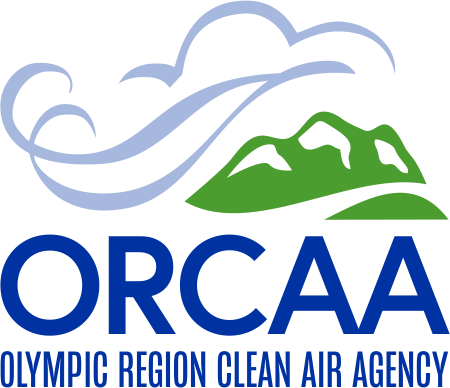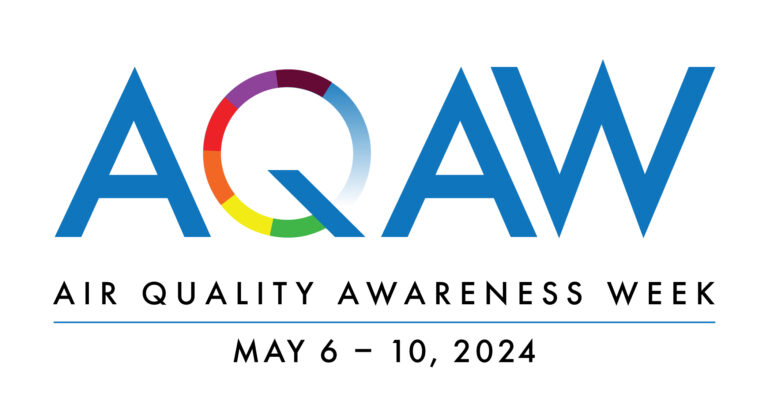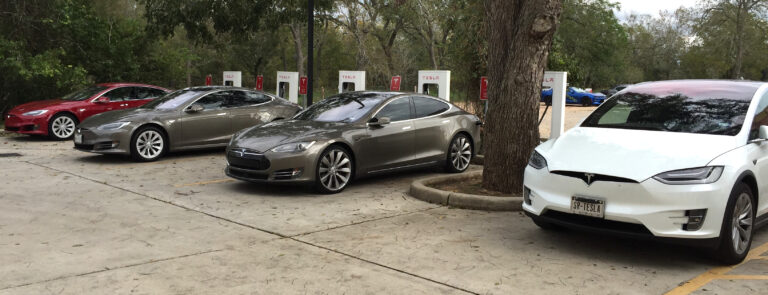As residents throughout ORCAA’s six counties awoke Wednesday morning, they noticed a lingering smell of smoke in the air. That’s not uncommon on the day after the Fourth of July – smoke from personal fireworks routinely fills neighborhoods on July 5.
But this year, the firework smoke was joined by smoke from a number of small to medium-sized wildfires in Western Washington. The largest of these is a still-active fire just north of Shelton in the Johns Prairie / McEwan Road area. This fire – The McEwan Fire – encompasses more than 250 acres and has resulted in more than 200 residents being evacuated from their homes. As of Wednesday morning, the fire is listed as 0-percent contained.
Another fire on Joint Base Lewis McChord in Pierce County has been fully contained by Wednesday, but smoke from that fire also impacted north Thurston County and until winds pick-up that smoke could linger well into the evening hours.
Throughout the holiday weekend, small spot fires sprung up throughout the region as well – reportedly as many as 12 in Thurston County alone! Smoke from these smaller fires may have create localized air pollution events.
To view current fires tracked by the Washington DNR, use their wildfire mapping tool. The DNR fire dashboard is active throughout the fire season and shows up-to-date information on wildfires affecting Washington state. Click here to link to a full screen version. Within the map, click on the fire icons to find current wildfire information.
Preventing local wildfires
Minimizing the risk of local fires is a vital tactic for reducing smoke pollution. That’s because preventing fires is the one action we can take to reduce wildfire smoke. To help with this, ORCAA honors and supports all fire-safety burn bans called by the state Department of Natural Resources (DNR) and local fire agencies. Fire safety burn bans are issued by DNR or county fire marshals when dry weather conditions heighten the risk of wildfires. But ORCAA is NOT responsible for issuing or enforcing fire safety burn bans. For more on local fire safety bans, contact your county fire officials. The DNR may also issue burn bans on state-protected lands. For information check the Burn Portal – WA DNR, or the Department of Ecology’s Burn Ban page.
Check ORCAA’s News Page to see the latest updates on Burn Bans.
Limit Exposure to Smoky Air— Who’s most at risk?
When smoke levels reach the “unhealthy for sensitive groups” category, people with heart or lung diseases, pregnant women, people over 65, and babies and children should limit time outdoors and keep indoor air clean. If air quality worsens and smoke levels reach “unhealthy,” “very unhealthy” or hazardous” categories, everyone should limit their time outdoors, avoid exercise outdoors, and take steps to keep indoor air clean. Check outdoor air quality for your area on the ORCAA air monitoring page, or on the Department of Ecology interactive map page. During wildfire smoke episodes, check Burn Portal – WA DNR and the Washington Smoke Blog.
Keep Indoor Air Clean
Close windows and doors but be mindful of the heat and stay hydrated to avoid other health problems. Use fans indoors, and if you have an air conditioner, set it to recirculate. Use a HEPA air cleaner. Don’t add to indoor air pollution; avoid using candles, and don’t smoke or vacuum while it’s smoky outside. For proven strategies for helping improve indoor conditions during smoke events, see our recent blog post here.
Monitor the Quality of Your Air
Some people, including people with heart or lung disease, pregnant women, people over 65, babies and children are at higher risk of problems from breathing smoke. It’s especially important for these people and those who care for them to pay attention to air quality and take steps to reduce their exposure to smoke. Washington Smoke Information (wasmoke.blogspot.com) provides the latest information on current air quality conditions and smoke forecasts so you know what to expect.
For more information on what you can do to stay healthy this wildfire season, visit the Washington State Department of Health Smoke From Fires website.


